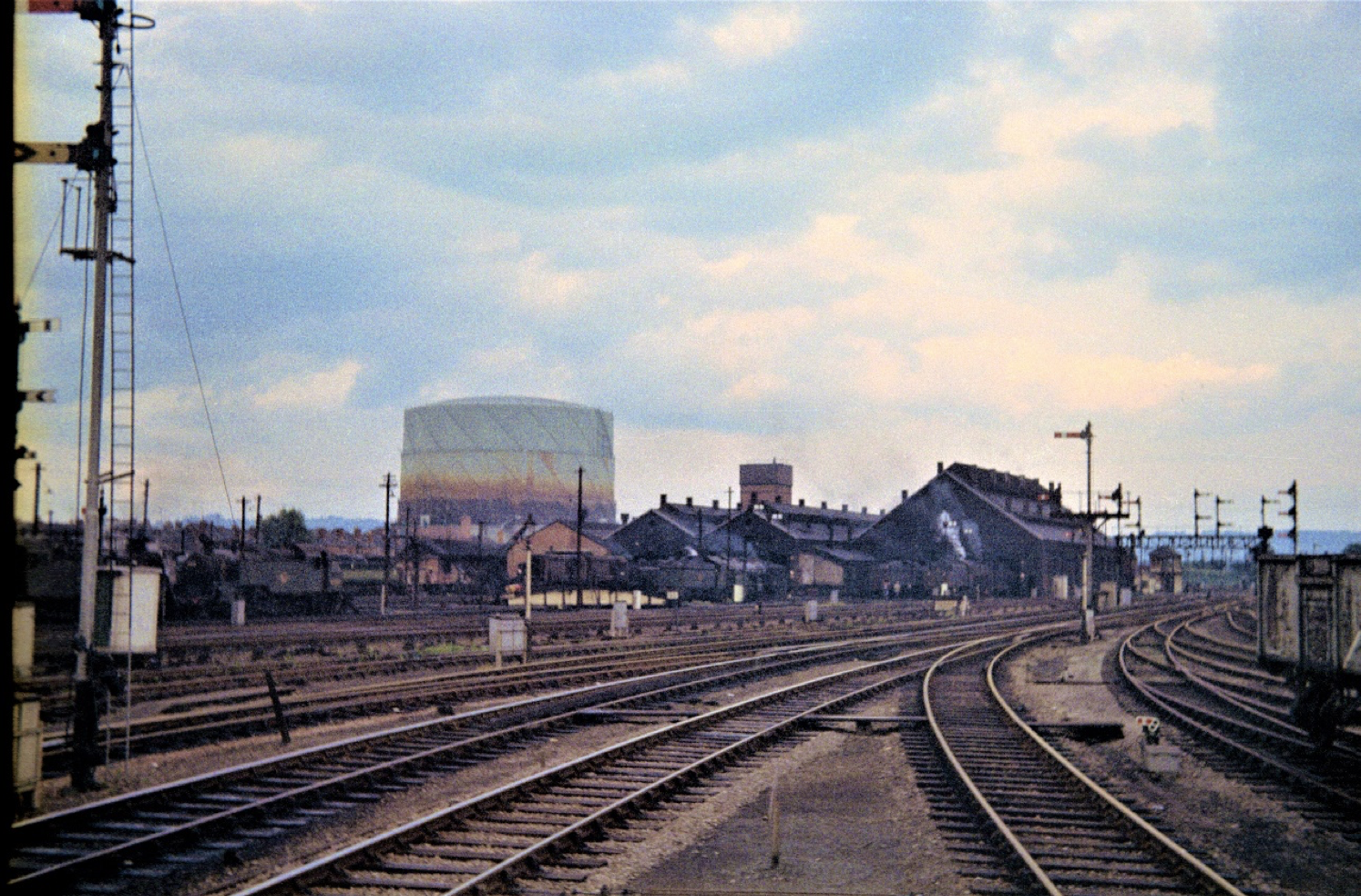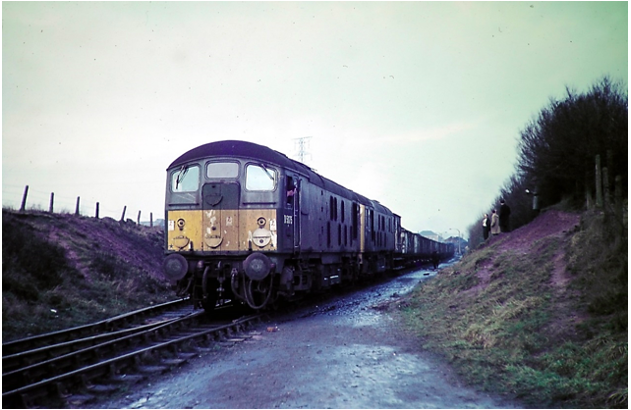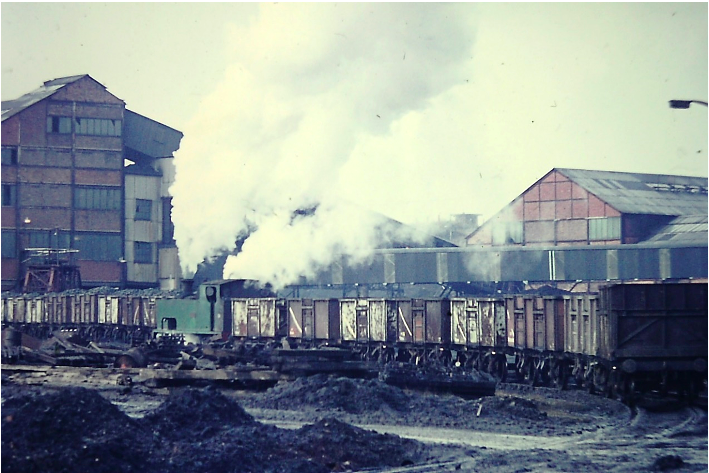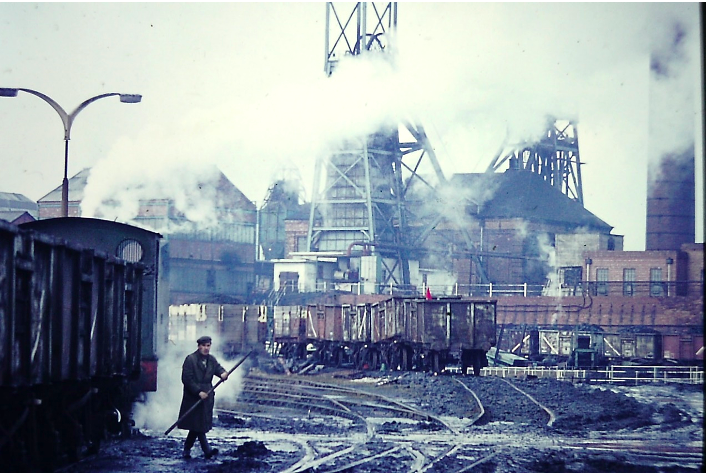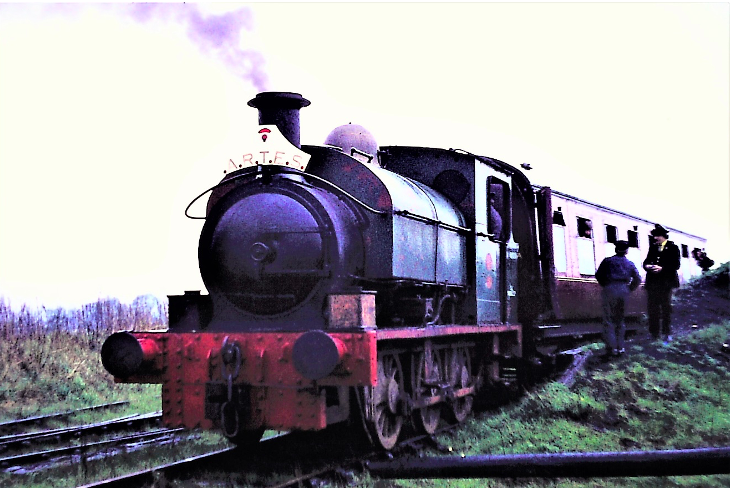Keele, and the Transport Scene in the Potteries
With the end of steam on British Rail in August 1968, my interest in railways waned somewhat. Over my last two years working for BR I had been taking evening classes in order to obtain a Certificate in Transport Studies from the Extra-Mural Department of the University of London. This gave me the impetus to apply for university.
After an abortive trip by train to Sussex University at Falmer, I made my first visit to the Potteries in March 1969 to attend interview at Keele University. On arrival at Stoke-on-Trent from Euston, I caught a PMT bus through Hartshill to Newcastle-under-Lyme. The vehicle was a Weymann-bodied Leyland Atlantean, one of many that worked trunk routes in the Potteries. Their livery was a simple BET-style red with cream waistband with the ‘PMT’ (Potteries Motor Traction) fleetname. The Potteries were very hilly, and the Atlanteans had to work hard if they had a full load, but one was rewarded, if that is the right word, with a noisy deep engine sound as they tackled the gradients. Probably because of this, the rear interior of the lower saloon often reeked of diesel, which suggested they were heavy on maintenance.
At Newcastle I had been advised to catch a Crosville bus and alight at the entrance to Keele University. Route C84 ran from Newcastle to Chester and was normally worked by Bristol FSs. Unfortunately, I just missed one, and Crosville buses, even when combined with the K52 service to Madeley, only ran at a 30-minute frequency. However, I did notice a gaggle of students waiting at the same bus stop adjacent to a multi-storey car park. As luck would have it, PMT ran a regular contract bus service for the University which left from the same place, so I boarded one for what became the first of many trips whilst at Keele.
The Keele railway scene
Having been offered a place, I left BR on 3 October 1969, going up to Keele the next day. The degree course was for four years with a general first year, taking joint honours in Geography and Geology, with Music and Chemistry as subsidiary subjects.
By the time I had arrived at Keele, AC electrification of the Euston to Liverpool and Manchester line was complete, and work was starting on the extension to Glasgow which would not be complete until 1974. In the meantime, the English Electric ‘Class 50s’ had been introduced and were in use north of Crewe, initially singly, but later in pairs to accelerated schedules.
In the Potteries, there were still five collieries working. Sulzer ‘Class 24s’ operating from a depot at Cockshute, opposite the site of the old Stoke (5D) steam shed, provided the main motive power for coal traffic. The nearest colliery to Keele, at Silverdale, produced good quality coal which was tripped to Crewe Basford Hall via the Market Drayton branch, using the Madeley chord to reverse and access the West Coast Main Line (WCML). Holditch Colliery was also nearby at Apedale. There were also other collieries at Woolstanton, Hem Heath and Trentham.
Once at University I joined the Keele Stephenson Society (KSS) which planned many events whilst I was there. On 18 June 1970, we undertook a census at Madeley on the WCML two miles west of Keele, an annual event during the summer timetable, recording activity from Madeley Road signal-box, with the permission of the local manager. On one excursion we visited the Talyllyn Railway, and other narrow-gauge railways in the North Wales.
Perhaps the most interesting trip was to Holditch colliery in winter 1970, when we had the opportunity to ride on the colliery shunter, Cornist, a Hudswell-Clarke 0-6-0T (No. 1503 of 1923) and take photographs of the operations. Coal production at the colliery ended in August 1989.
A pair of Sulzer type 2s, with D5075 leading, haul a loaded coal train away from Holditch Colliery during a Keele Stephenson Society visit in 1970.
The photos above illustrate the conditions under which shunting operations at Holditch Colliery were undertaken. During the Keele Stephenson Society visit there was an opportunity to ride the footplate of the shunter: a Hudswell Clarke 0-6-0T named Cornist.
KSS also paid a visit to the Foxfield Light Railway Society. The route comprised part of the branch from Blythe Bridge to Foxfield (Dilhorne) Colliery, closed in 1965. We joined an ARTES special made up of Stanier coach M27249M hauled by an anonymous ex-Stewarts & Lloyds Manning Wardle 0-6-0ST.
KSS visits the Foxfield Light Railway in winter 1971. The ARTES special is hauled by an ex-Stewarts & Lloyds Manning Wardle 0-6-0ST.
[Two other locos are preserved here: HENRY CORT, a Peckett 0−4−0 ST (933 of 1903) from the Irthlingborough ironstone mines of Richard Thomas & Baldwins Ltd; and 0−4−0ST, Hawthorn Leslie 3581 of 1924, from Marston, Thompson & Evershed Ltd Brewery, Burton-on-Trent: ref 2].
In October 1971 my erstwhile travel companion, Roger Peakman paid a visit to Keele, as he wanted to explore some industrial archaeological sites including Sir Nigel Gresley’s Canal at Apedale. It should be said that this Sir Nigel Gresley was not the famous locomotive engineer, but rather the owner of a colliery at Apedale, and who lived at Knypersley Hall at Biddulph. He had the canal built to carry coal to Newcastle-under-Lyme. He is remembered in the name of the local pub, The Gresley Arms at Alsager’s Bank.
We also visited the Trent & Mersey Canal at Harecastle tunnel. This ran parallel to the old North Staffordshire Railway tunnel of the same name, that had recently been replaced by a new stretch of line, the Harecastle deviation, to accommodate the clearances needed for the electrification of the line from Stoke to Manchester.
However, I still felt the attraction of railways, and whilst I drew the line at collecting multiple unit numbers, I still noted a wide variety of electric and diesels locomotives. I also kept in touch with Roger and Jeff, as they invited me to join them on depot visits during my time at Keele. Jeff obtained the permits whilst Roger provided the transport in his fast V4 2-litre Ford Corsair.
ref 1: nsmg.apedale.co.uk
ref 2: Industrial Railway Record, no.17 Feb 1968, Standard Gauge in N Staffordshire, 1967
